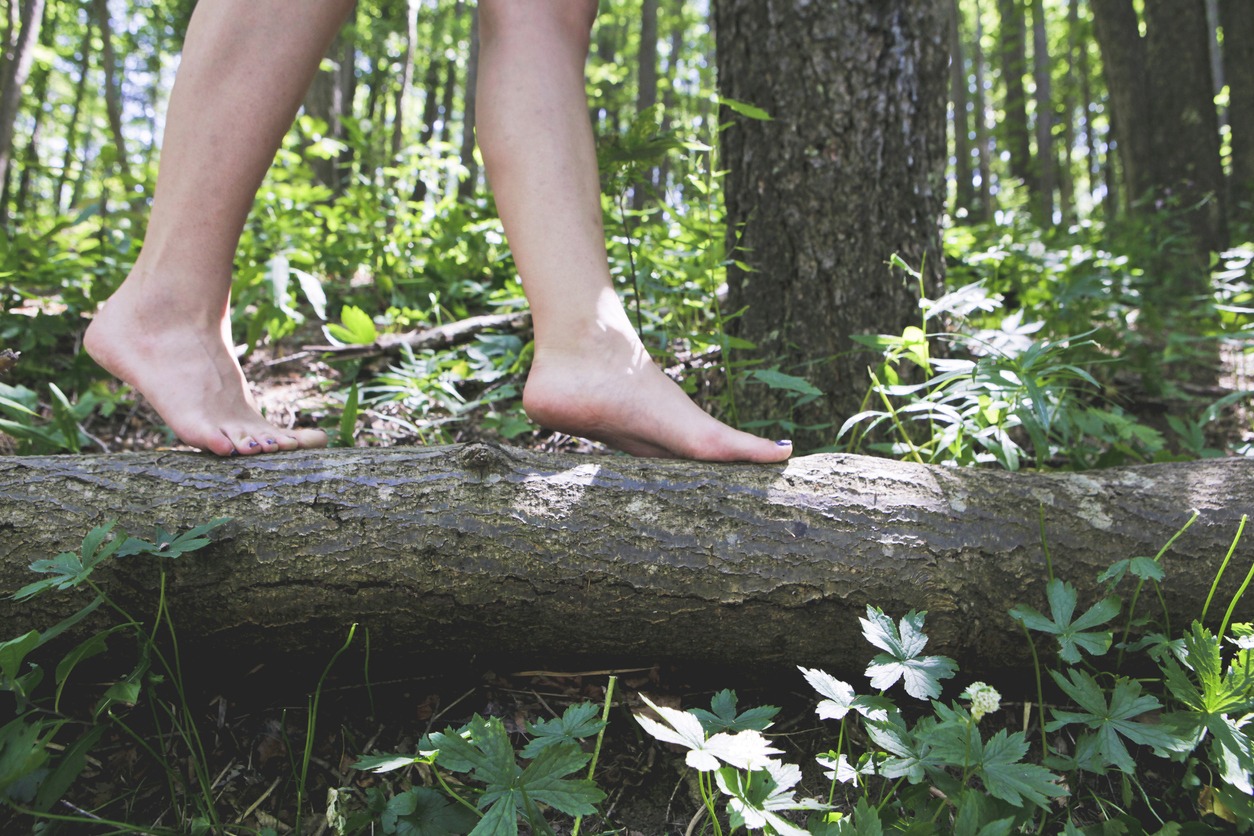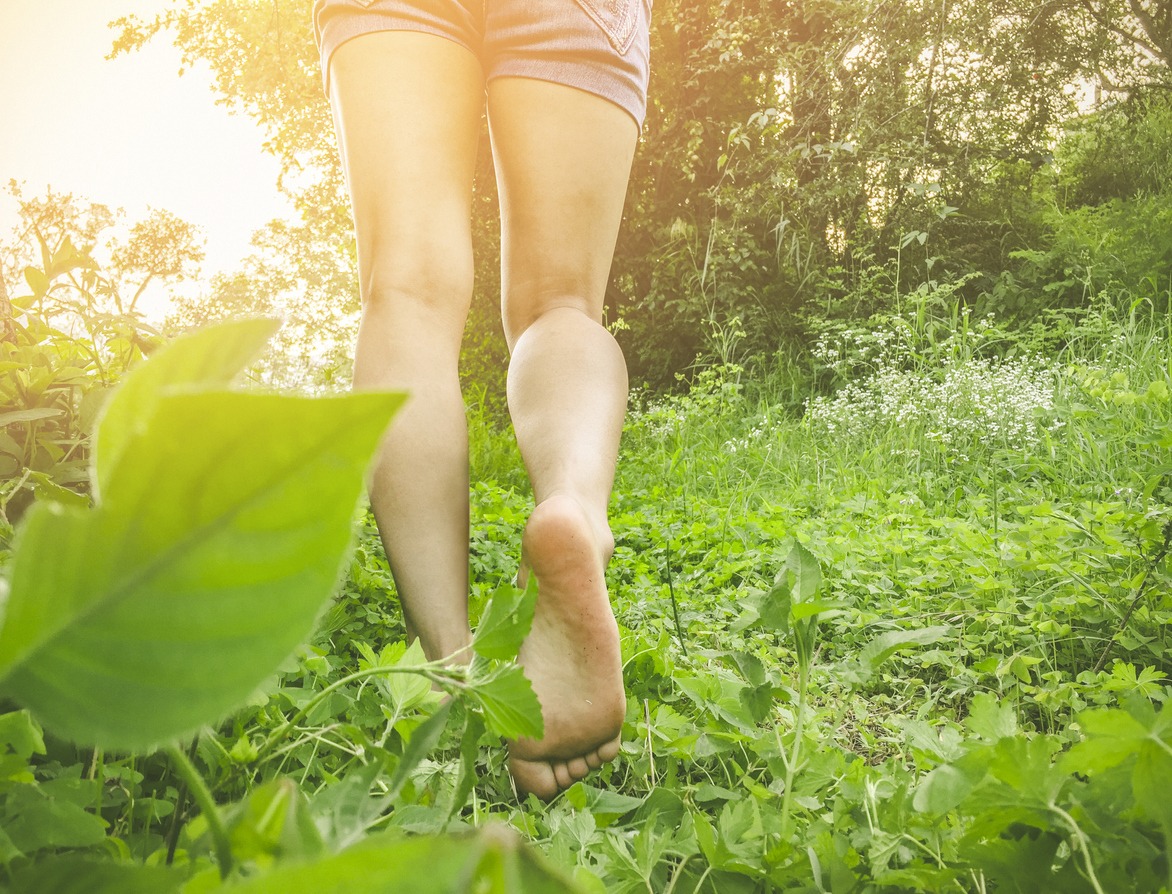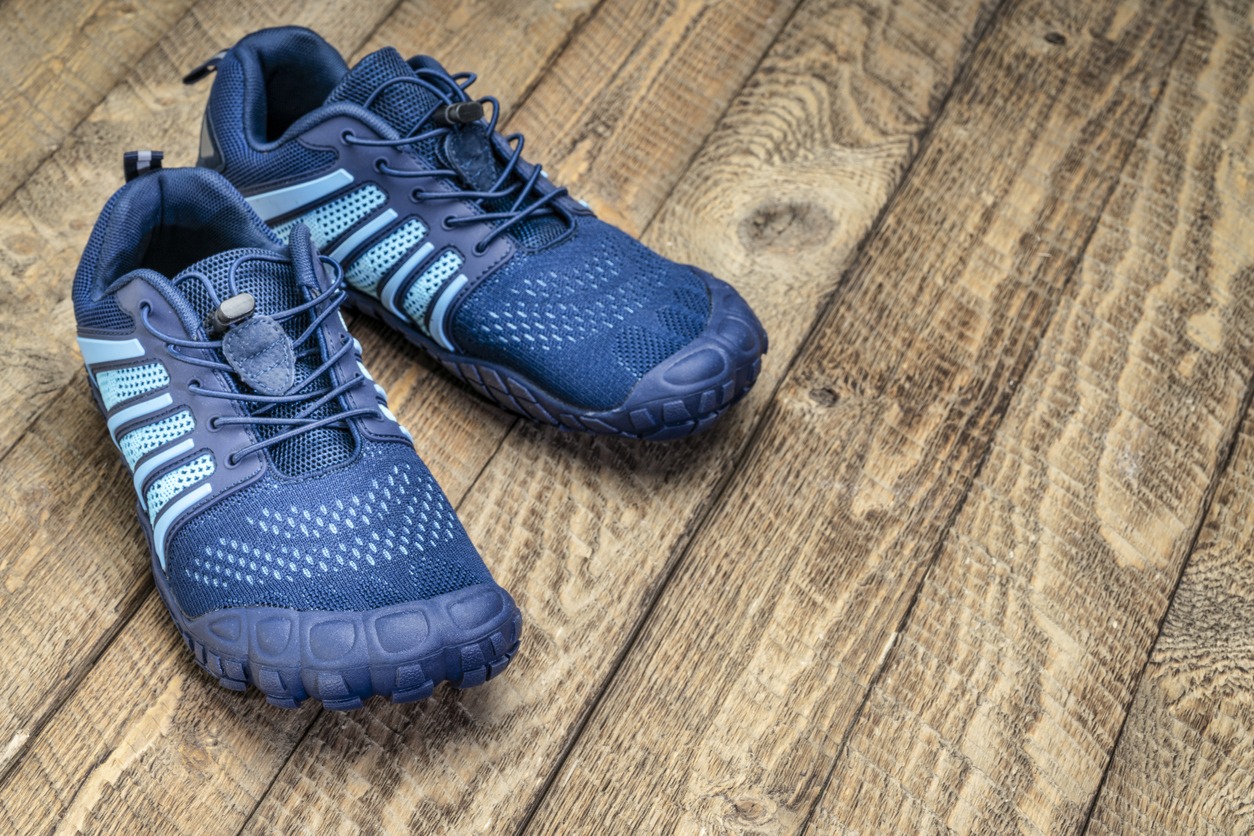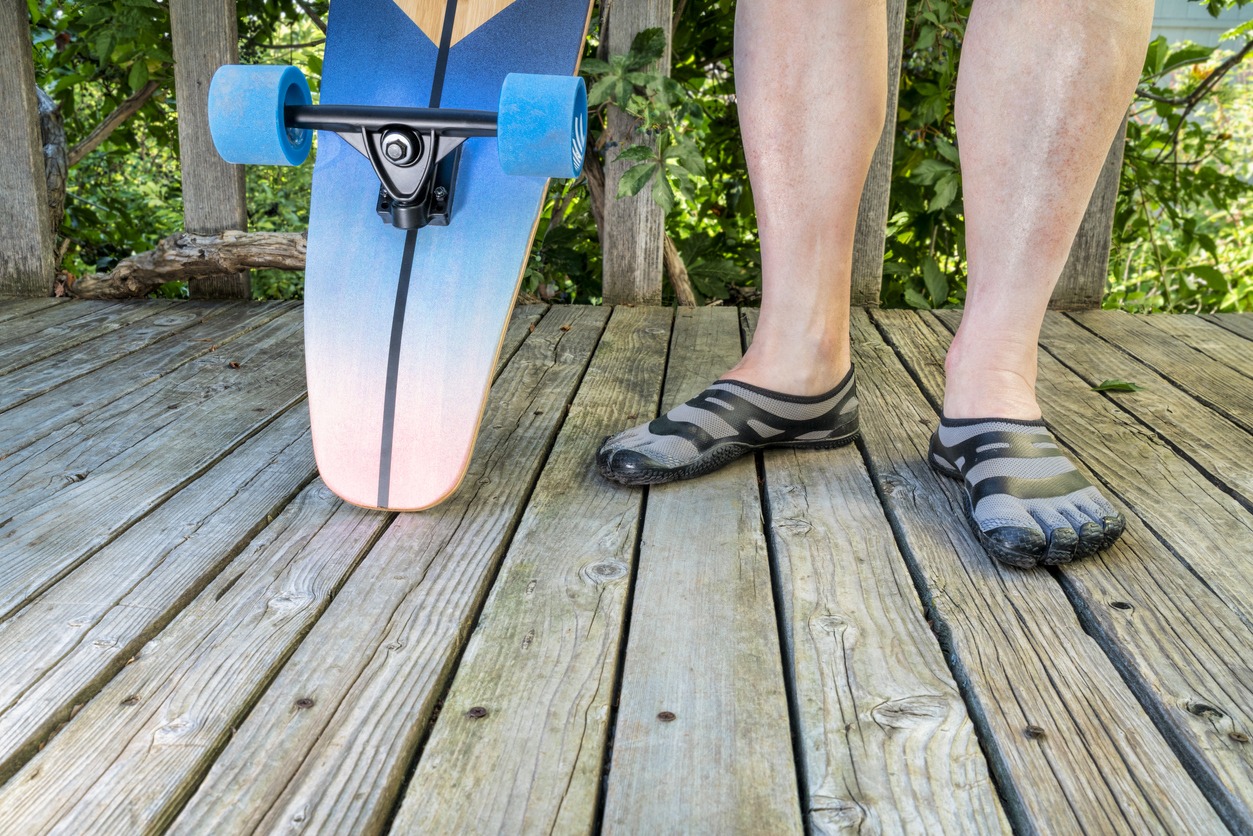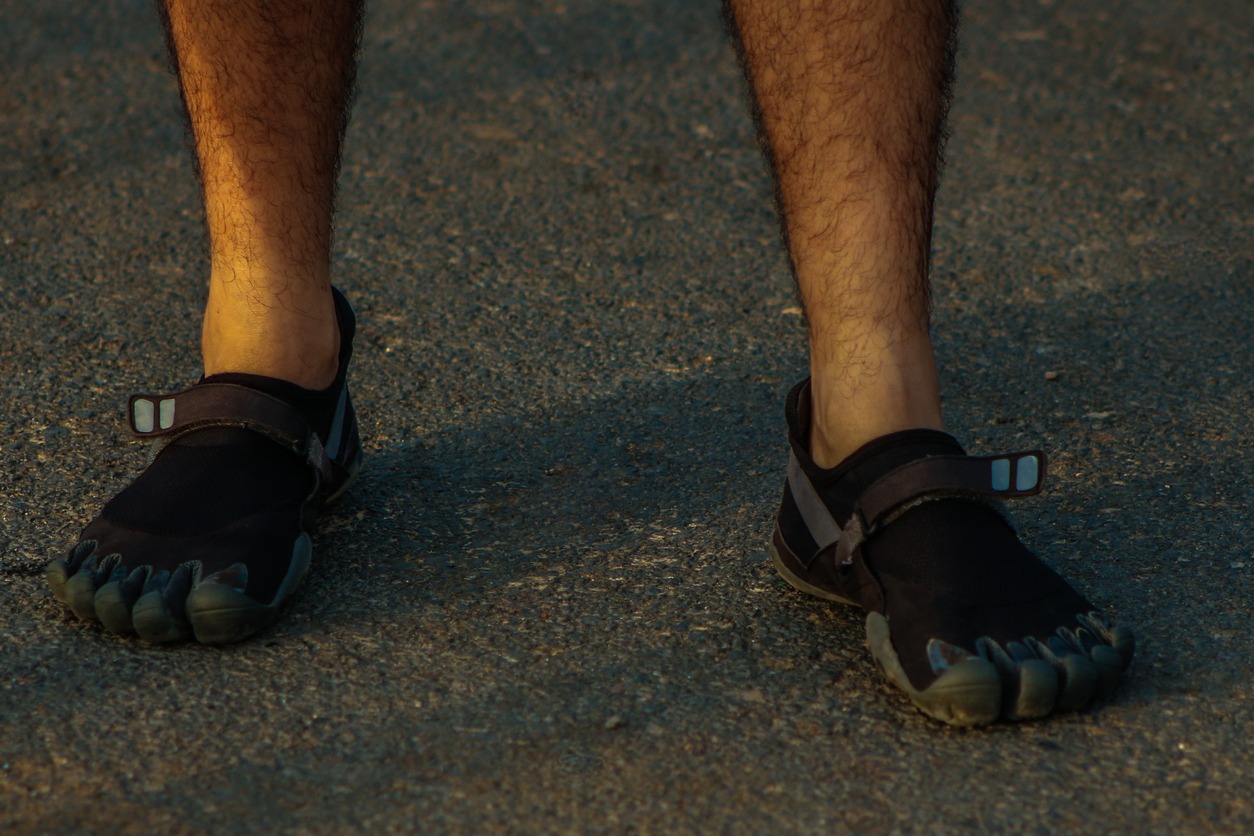A lot of people wear shoes outdoors in order to keep their feet protected and supported whenever they are walking or running on hard and rough floors and surfaces. While shoes are effective in protecting the feet against harmful elements that can inflict wounds or injuries, they can sometimes be very uncomfortable to wear, as shoes can sometimes be too narrow for our feet, thus causing discomfort and pain.
So, in order for some people to let their feet heal after wearing shoes for hours, they tend to walk barefoot while in their homes. Walking barefoot enables people to have a more natural stride whenever they are walking, as their feet are more flexible and aren’t restrained by shoes that are usually rigid.
According to Christopher McDougall, the author of “Born To Run,” a bestselling book published in 2009, the modern cushioned shoe that we wear today is one of the causes of foot-related injuries. [1] In fact, when he started walking and running barefoot more often, he didn’t experience major injuries or a lot of pain in his feet compared to when he was running while wearing sports shoes. So, McDougall became an avid supporter of barefoot walking and running.
So, should you consider barefoot walking and do it extensively? In this article, we will help provide you with answers on whether or not barefoot walking is suitable for you.
What is Extended Barefoot Walking?
Extended barefoot walking is a practice wherein a person walks barefoot indoors and outdoors for a long period of time. A lot of people only walk barefoot whenever they are at home, but there are also some that choose to do barefoot walking outdoors, although they are wearing barefoot shoes, which are a type of footwear that provides protection for your feet while offering limited cushioning and support so that you will still feel that you are walking barefoot.
Barefoot Shoes
Barefoot shoes have several defining features that make them different from normal sports shoes. Let’s talk about each of those features so that you can clearly see the benefits of wearing barefoot shoes outdoors.
Thinner Midsoles
The biggest difference between sports shoes and barefoot shoes can be found in the midsoles, as barefoot shoes have thinner midsoles, and sometimes, they don’t even have midsoles at all. The thinner midsoles allow your feet to be more flexible while walking. The outsoles of barefoot shoes are still effective in providing protection for the soles of your feet against splinters, spikes, and other harmful elements that can cause injuries or wounds.
Zero Drop
Because of the thinner midsoles, barefoot shoes have a “zero drop” feature, which basically means that all sections of your soles are landing equally on the ground, so your heels are not lifted higher compared to your forefoot.
A lot of sports shoes today have a high or low heel-to-toe drop, as this is believed to give runners the ability to have a faster stride when running. Moreover, the elevated heel on sports shoes is designed to reduce the impact felt by heels whenever you run, as the impact can cause plantar fasciitis and other heel-related injuries. However, the disadvantage of having an elevated heel is that your sense of balance will be reduced, and your forefoot will most likely receive more impact on the ground, which can then lead to injuries on the toes.
With barefoot shoes, the impact that your feet will feel when you walk or run is evenly distributed on the toes. But it is essential to practice walking with your forefoot touching the ground first for better and safer landing on the ground, as landing on your heels can be painful and dangerous.
Wide Toe Box
A lot of sports shoes today have a narrow toe box, and this can often cause our toes to be bunched together too tightly. When toes have no wiggle room and are squeezed by a narrow toe box for many hours, there is a high chance that you can get ingrown toenails, bunions, and other toe-related conditions that can be very painful and debilitating.
Fortunately, barefoot shoes have a wide toe box that allows your toes to move freely. There are also some barefoot shoes that have individual or separate slots for each toe so that they will have much more freedom of movement.
Is Extended Barefoot Walking Safe for You?
While extended barefoot walking is relatively safe for most people, it may not be safe for a few, particularly those that have weak bones and muscles, as well as those with poor immune function.
Stress Fractures
If you have weak bones on your feet or legs, you will most likely get stress fractures due to extended barefoot walking. According to a 2011 study conducted by Brigham Young University, out of 18 runners that transitioned from wearing traditional running shoes to barefoot shoes, about half of them developed inflammation in their bone marrow, and this inflammation can lead to a stress fracture. [2]
However, it is important to note that those 18 testers ran regularly, and running can put more stress on the muscles and bones of the feet and legs. If you are planning to wear barefoot shoes, it is better to just use them strictly for extended barefoot walking instead of for running as a form of exercise or in marathons and competitions.
Bacteria, Viral, or Fungal Infection
Walking barefoot without wearing barefoot shoes and other forms of protection can often lead to an infection that is caused by fungi, bacteria, or viruses. Some of the diseases you can get from walking barefoot outdoors include athlete’s foot and toenail fungus or onychomycosis. To prevent infections from happening, you should wear barefoot shoes if you plan to do extended barefoot walking outdoors, especially in areas that have dirty floors or surfaces.
Extended barefoot walking is safe, but you will need to wear barefoot shoes to prevent infections and injuries. You can check online for some of the best barefoot shoes on the market and see which ones have features that are suitable for you.
References
[1] McDougall, C. (2011, November 2). The Once and Future Way to Run. The New York Times. Retrieved February 1, 2023, from https://www.nytimes.com/2011/11/06/magazine/running-christopher-mcdougall.html
[2] Reynolds, G. (2013, March 26). What benefit to be found in barefoot runs? Herald Tribune. Retrieved February 1, 2023, from https://www.heraldtribune.com/story/news/2013/03/26/what-benefit-to-be-found-in-barefoot-runs/29161425007/

